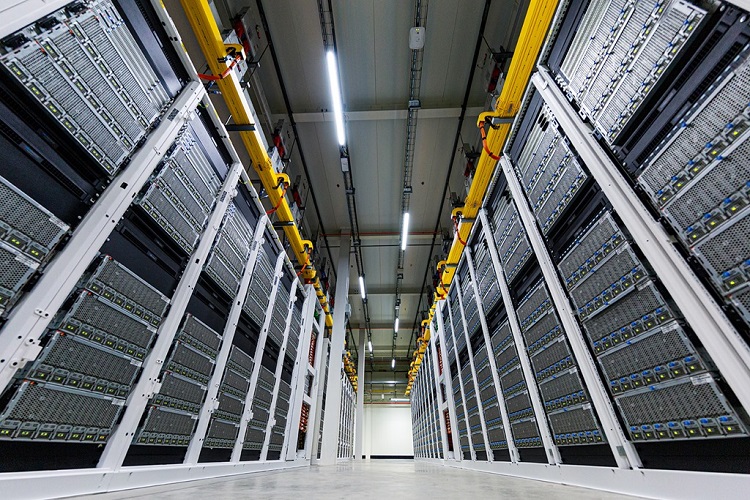Leading hardware engineering at a company known for its vast portfolio of software applications and systems is not as strange as it sounds, as the Microsoft Cloud depends on hardware as the foundation of trust, reliability, capacity, and performance, to make it possible for Microsoft and our customers to achieve more. The underlying infrastructure that powers our 60 plus datacenter regions across 140 countries consists of hardware and systems that sit within the physical buildings of datacenters—enabling millions of customers to execute critical and advanced workloads, such as AI and quantum computing, as well as unleashing future innovations.
Datacenter hardware development is imperative to the evolution of the Microsoft Cloud
As the Microsoft Cloud offers services and products to meet the world’s ever-growing computing demands, it is critical that we continuously design and advance hardware systems and infrastructure to deliver greater performance, higher efficiency, and more resiliency to customers—all with security and sustainability in mind. Today, our hardware engineering efforts and investments focus heavily on roadmap and lifecycle planning, sourcing and provisioning of servers, and innovating to deliver next-generation infrastructure for datacenters. In our new Hardware Innovation blog series, I’ll be sharing some of the hardware development and investments that are driving the most impact for the Microsoft Cloud and making Azure the trusted cloud that delivers innovative, reliable, and sustainable hybrid cloud solutions. But first, let’s look “under the hood” of a Microsoft datacenter:
From server to cloud: the end-to-end cloud hardware lifecycle
Our hardware planning starts with what customers want: capacity, differentiated services, cost-savings, and ultimately the ability to solve harder problems with the help of the Microsoft Cloud. We integrate key considerations such as customer feedback, operational analysis, technology vetting, with evaluation of disruptive innovations into our strategy and roadmap planning, improvement of existing hardware in our datacenters for compute, network architecture, and storage, while future-proofing innovative workloads for scale. Our engineers then design, build, test, and integrate software and firmware into hardware fleets that meet a stringent set of quality, security, and compliance requirements before deploying them into Microsoft’s datacenters across the globe.
Sourcing and provisioning cloud hardware, sustainably and securely
With Microsoft’s scale, the ways in which we provision, deploy, and decommission hardware parts have the potential to drive massive planetary impact. While we work with suppliers to reimagine a more resilient and efficient supply chain using technologies such as blockchain and digital twins, we also aim to have sustainability built into every step of the way. An example of our sustainability leadership is the execution of Microsoft Circular Centers, where servers and hardware that are being decommissioned are repurposed—efforts that are expected to increase the reuse of servers and components by up to 90 percent by 2025. I will be sharing more on our Circular Centers progress this year. We also have in place the Azure Security and Resiliency Architecture (ASRA) as an approach to drive security and resiliency consistently and comprehensively across the Microsoft Cloud infrastructure supply chain.
Innovating to deliver next-generation datacenter infrastructure
We are investigating and developing technology that would allow datacenters to be more agile, efficient, and sustainable to operate while meeting the computing demands of the future. We showcased development in datacenter energy efficiency, such as our two-phase liquid immersion cooling, allowing more densely packed servers to fit in smaller spaces, and addressing processor overclocking for higher computing efficiency with a lower carbon footprint. We also continue to invest in and develop workload-optimized infrastructure—from servers, racks, systems, to datacenter designs—for more custom general-purpose offerings as well as specialized compute such as AI, high-performance computing, quantum, and beyond.
Building the most advanced and innovative hardware for the intelligent cloud and the intelligent edge
The journey of building Microsoft Cloud’s hardware infrastructure is an exciting and humbling one as we see continual advancement in technology to meet the needs of the moment. I have been in the hardware industry for more than thirty years—yet, I’m more excited each day as I work alongside leaders and experts on our team, with our partners across the industry, and with the open source community. Like many of the cloud services that sit on top of it, Microsoft’s hardware engine runs on consistency in quality, reliability, and scalability. Stay tuned as we continue to share more deep dives and updates of our cloud hardware development, progress, and results—and work to drive forward technology advancement, enable new capabilities, and push the limits of what we can achieve in the intelligent cloud and the intelligent edge.
Source: azure.microsoft.com





0 comments:
Post a Comment